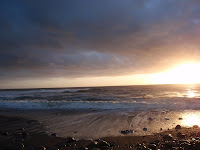
James Cook (1728-1779) was an English explorer and navigator who started sailing at age 27. In 1768, Cook was appointed to lead an expedition to Tahiti to establish an observatory. The observatory was used to measure the eclipse of the sun by Venus. After this successful mission, Cook was sent to seek out the great southern continent, but determined that there was none. Cook was the first man to set foot on New Zealand, although it was sighted by Abel Tasman in 1642. In 1770, Cook explored the East and North coast of New Holland (Australia) and claimed the land for Great Britain. On Cook's second circumnavigation, Cook circled Antartica, but ice kept his ship, Resolution, from landing. Upon his return from this trip, he was promoted to Captain and was elected as Fellow of the Royal Society. Once again, Cook went on a voyage. This time, Cook searched for the Northwest passage. After making it to the Hawaiian Islands, Cook went to the coast of North America and worked his way up to the Bering Strait, but because of the amount of ice, Cook was forced to turn back to Hawaii. On Febuary 14, 1779, Cook was stabbed to death by Hawaiian natives on Febuary 14, 1779 after trying to arrest their cheif. Cook is one of the Top 10 explorers for discovering the Hawaiian islands, for landing on New Zealand, and for the three trips around the world that he made.
Information from...
http://www.lucidcafe.com/















